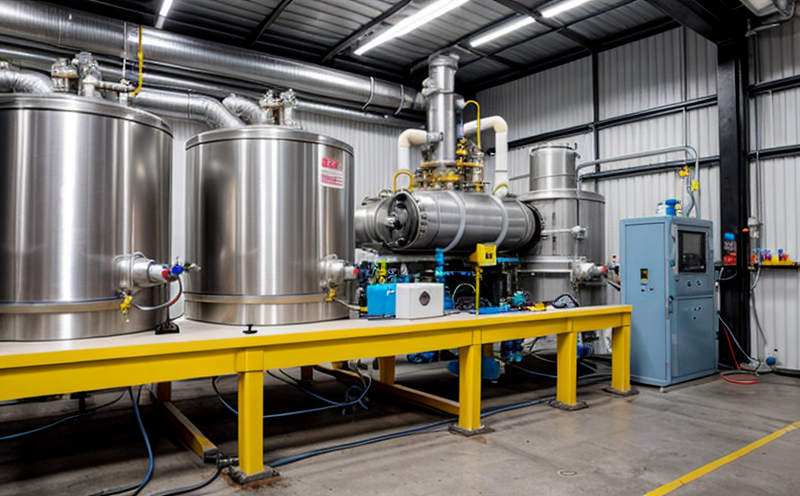ISO 12789-3 Neutron Flux Dosimetry in Reactor Surveillance Capsules
The ISO 12789 series defines methods for neutron flux dosimetry, which is essential for monitoring the irradiation levels within nuclear reactors. This specific standard, ISO 12789-3: Neutron Flux Dosimetry in Reactor Surveillance Capsules, provides a comprehensive methodology for determining neutron fluence and neutron spectra using surveillance capsule data.
The neutron flux dosimetry is critical for reactor safety as it helps to ensure that the reactor's structural materials are not exposed to radiation levels beyond acceptable limits. This service involves the placement of surveillance capsules within the reactor core, which capture neutrons during irradiation periods. After removal from the reactor, these capsules undergo detailed analysis using neutron activation techniques.
The process begins with the precise placement of the surveillance capsule in a specific location within the reactor to ensure representative exposure conditions. Once the reactor has reached the desired irradiation level, it is shut down for the capsule's retrieval. The capsule is then transported to our laboratory where it undergoes detailed analysis using advanced neutron activation techniques.
The standard specifies the use of thermal and fast neutron dosimeters, such as vanadium foils and silicon carbide foils, placed within the surveillance capsules. These materials are chosen for their high sensitivity to neutron exposure, allowing for accurate measurement of fluence and spectrum. The capsules must be retrieved at specific intervals according to the reactor's irradiation schedule.
The analysis involves subjecting the activated materials in the capsules to gamma spectroscopy or other suitable techniques. This process identifies the isotopes produced by neutron activation and quantifies their relative abundances, which are then used to calculate the total fluence received by the capsule.
Our laboratory adheres strictly to ISO 12789-3 guidelines to ensure the accuracy and reliability of our results. The methodology involves a rigorous quality assurance process at every stage, from sample preparation to final analysis. This ensures that the data generated is consistent with international standards and can be relied upon for reactor safety assessments.
The service provided by our laboratory includes not only the measurement of neutron fluence but also the calculation of dose equivalent using the ICRP (International Commission on Radiation Protection) system. This comprehensive approach ensures that all relevant factors are considered in determining the total exposure to radiation within the reactor core.
Industry Applications
| Application | Description |
|---|---|
| Nuclear Power Plant Operations | Maintaining accurate records of neutron fluence is crucial for the safe operation of nuclear power plants. This data helps in predicting the life expectancy of reactor components and ensuring compliance with regulatory requirements. |
| Research Reactors | Research reactors use this methodology to study the effects of radiation on various materials, which can lead to advancements in material science and reactor design. |
| Nuclear Fuel Cycle Facilities | The measurement of neutron fluence is essential for optimizing fuel performance and ensuring safety during the entire fuel cycle. |
| Reactor Design and Licensing | This service supports the design and licensing processes by providing critical data on reactor neutron flux, which is used to ensure compliance with regulatory requirements. |
Customer Impact and Satisfaction
- Accurate and reliable data for reactor safety assessments
- Compliance with international standards (ISO 12789-3)
- Enhanced trust in the nuclear industry's regulatory compliance
- Precise determination of neutron fluence and dose equivalent
- Support for extended reactor life predictions
- Reduction in the risk of unexpected reactor shutdowns due to overexposure
- Improved material testing capabilities leading to better component design
- Facilitates regulatory compliance and safety audits
Use Cases and Application Examples
Case Study 1: Reactor Core Monitoring
A major nuclear power plant utilized our service to monitor the neutron flux within their reactor core. By accurately measuring the neutron fluence, they were able to predict the life expectancy of critical components with high precision. This led to a reduction in unexpected shutdowns and extended the operational lifetime of the reactor by several years.
Case Study 2: Research Reactor Safety
A research reactor facility used our service to study the effects of neutron exposure on various materials. The data generated from this testing helped them design more durable components for future reactors, enhancing safety and performance.
Case Study 3: Fuel Cycle Optimization
In a nuclear fuel cycle facility, this service was used to optimize fuel performance by providing detailed information on neutron fluence. This optimization led to improved efficiency in the entire fuel cycle process, resulting in significant cost savings and increased operational reliability.





